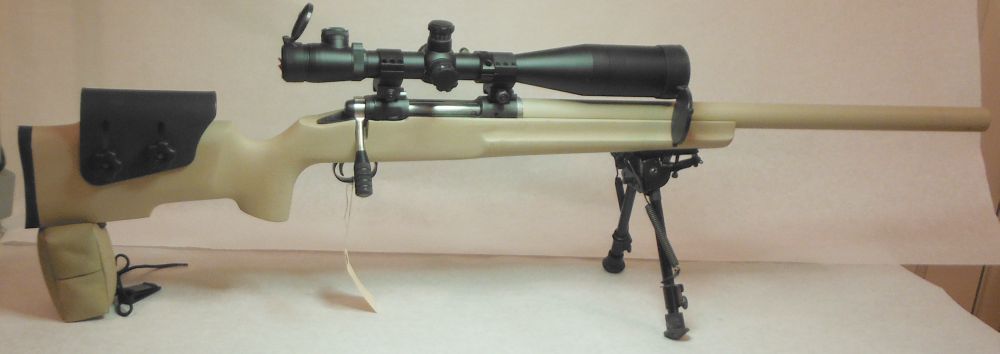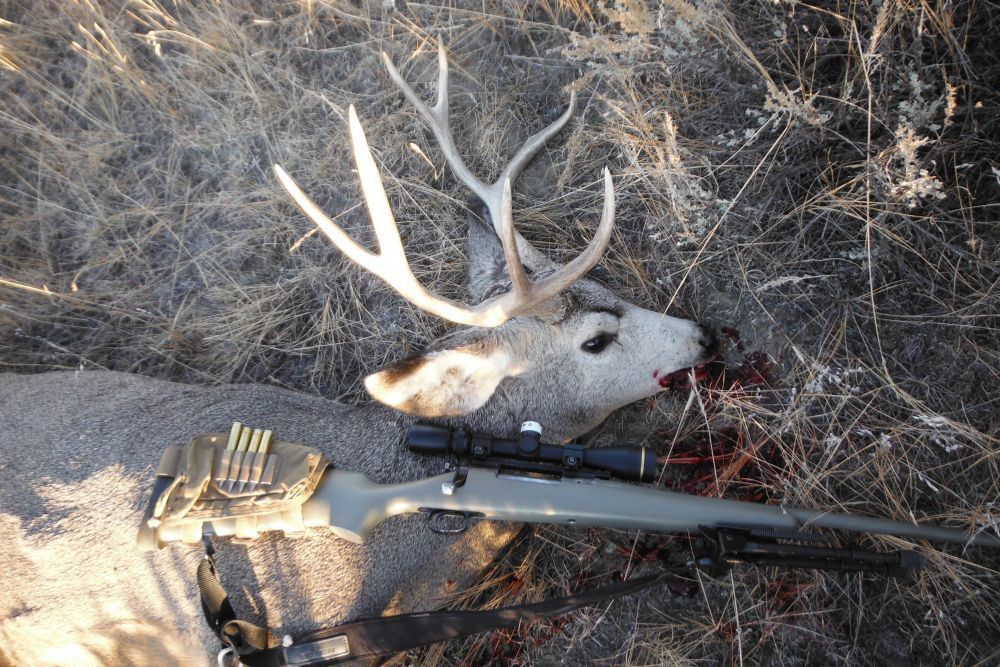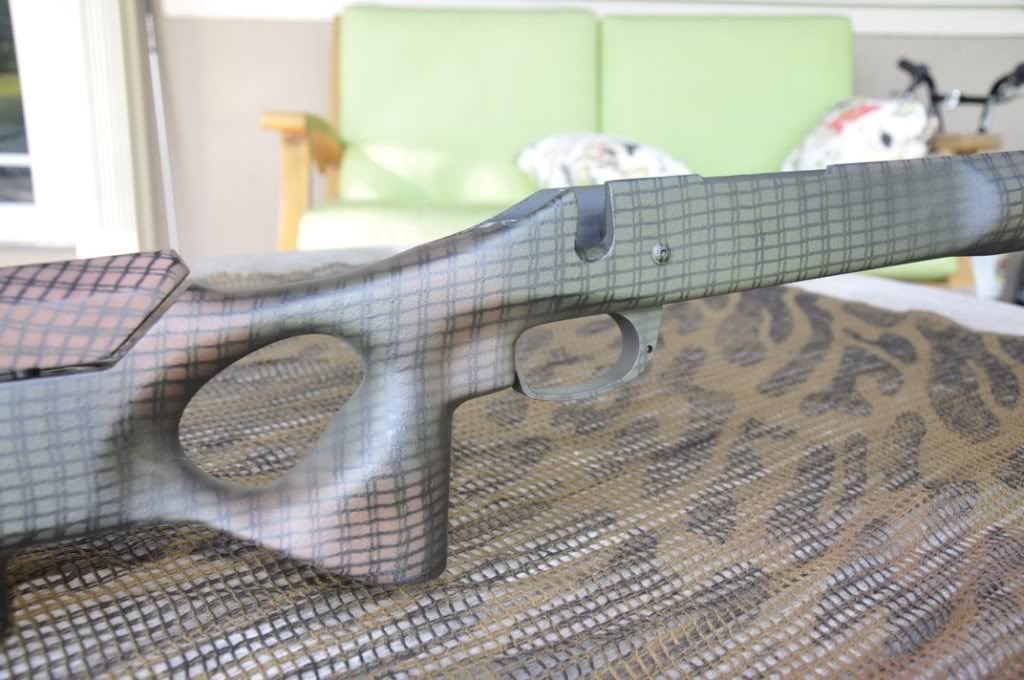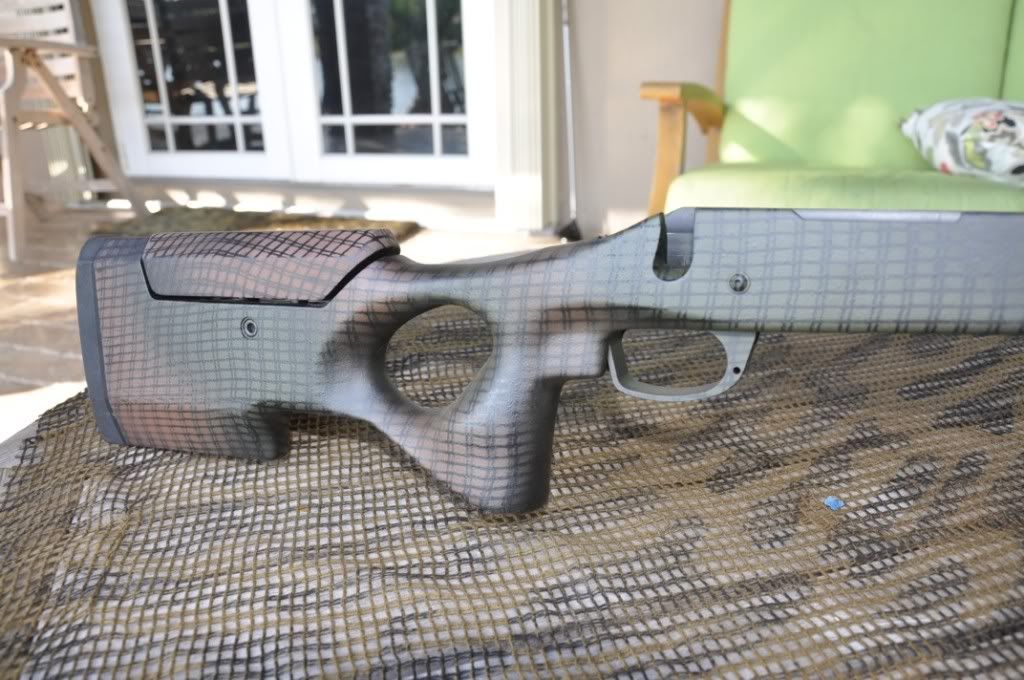I'm sure that this has come up on here before but, What is the best way/product to paint a stock? I'll cut to the chase, I need to paint a Manners stock and I want to use something durable. I've used cerakote on several barrels, actions, ect., but never tried it on a stock.
Join the Hide community
Get access to live stream, lessons, the post exchange, and chat with other snipers.
Register
Download Gravity Ballistics
Get help to accurately calculate and scope your sniper rifle using real shooting data.

Install the app
How to install the app on iOS
Follow along with the video below to see how to install our site as a web app on your home screen.
Note: This feature may not be available in some browsers.
You are using an out of date browser. It may not display this or other websites correctly.
You should upgrade or use an alternative browser.
You should upgrade or use an alternative browser.
Gunsmithing Stock painting question
- Thread starter omurnion
- Start date
Cerakote works fine. 150 degrees for 2 1/2 hours work great. Also any high quality automotive enamel last very well. That's why Sherwin Williams Polane is used by some of the big stock makers like McMillan. Just remember, at the end of the day, it's paint and will scratch against anything sharp.
Agree. I've used both Cerakote C and H series on stocks with good results. Used to use Duracoat but I keep poisoning myself with that stuff. Yech! It's durable on stocks though.
Cerakote works fine. 150 degrees for 2 1/2 hours work great.
This ^^^^^^^^^^^
That is a pretty sweet paint job! I am kind of leaning towards cerakote because I'm tooled up for it, not sure that I'm this handy!
Ok, I never did anything like this until this one. I'm only a one solid color applicator. This is mine and I thought WTF, who cares if I mess up. If I can, anyone can, trust me. I would like to try some real cool stuff, but time is my main factor.
My problem is when I get my hands on the rifle, I'm like screw the paint, lets shoot this thing. However I think that the stock is going to be in my hands before the rifle is ready this time.
150F is about it... i split a manners T4A right down the middle when i set the temp wrong and left it too long... wasn't an issue with the stock, i just cooked it, plain and simple.
H series is the way i'd go.
H series is the way i'd go.
I used H-Series Cerakote to do my Manners T4 stock, I used Battleship grey, Smiths grey, OD Green, Graphite Black. Stencils from Bulldogarms.com. Prepared it by sanding it with 800grit wet&dry (dry), then rubbed it down with Isopropyl Alcohol twice, hung from a wire through the front sling stud, masked up the bedding area and recoil pad. Baked for 20mins between coats so I could apply stencils, then a 2.5hr final bake.


This a dumb question but I assume you guys take out the butt pad before put it in the oven if so what's the process? Thanks
I couldn't remove the buttpad, so I used fineline tape around the join between buttpad and stock, and then just normal green masking tape on the rest. I was only baking at a maximum of 176deg F. You really need to be careful when baking a stock though, mine could have split, the bedding could have gone to shit, the buttpad could of melted or hardened.. But I kept the temperature as low as possible and took my time.
If you can remove the buttpad, then by all means do so.
If you can remove the buttpad, then by all means do so.
As with any paint work, preparation is everything.
Something I've fiddled with while using cerakote is a webbing agent. It's available from boat/fiberglass vendors all over the web. Cheap at only about 30 shekels a quart.
You mix up to 50% by volume and you'll be able to texture a stock with cerakote. I've only done it once on a sample stock just to see how it turned out. Seems durable enough though as we've had it kicked around for almost a couple years now.
What's really cool about this is of you miss a blem/pin hole when prepping, this makes quick work to fix it. You can just dab some on the end of a wire (I use mig welder wire) and capillary action will wick the stuff into the hole. Then it just looks like spatter once it cures.
Makes life easy.
If you start messin with stencils and camo, know that stencils LOVE to cook themselves to cerakote once it cures. We've found it best to flash cure the parts at 150 for ten minutes, then pull em and peel. The toss em back in for the required cure time.
So far so good. Watch H/S stocks. The LOOOVEEE to delaminate on you if you cook em. I won't do them anymore cause of it.
Good luck.
C.
Something I've fiddled with while using cerakote is a webbing agent. It's available from boat/fiberglass vendors all over the web. Cheap at only about 30 shekels a quart.
You mix up to 50% by volume and you'll be able to texture a stock with cerakote. I've only done it once on a sample stock just to see how it turned out. Seems durable enough though as we've had it kicked around for almost a couple years now.
What's really cool about this is of you miss a blem/pin hole when prepping, this makes quick work to fix it. You can just dab some on the end of a wire (I use mig welder wire) and capillary action will wick the stuff into the hole. Then it just looks like spatter once it cures.
Makes life easy.
If you start messin with stencils and camo, know that stencils LOVE to cook themselves to cerakote once it cures. We've found it best to flash cure the parts at 150 for ten minutes, then pull em and peel. The toss em back in for the required cure time.
So far so good. Watch H/S stocks. The LOOOVEEE to delaminate on you if you cook em. I won't do them anymore cause of it.
Good luck.
C.
As with any paint work, preparation is everything.
Something I've fiddled with while using cerakote is a webbing agent. It's available from boat/fiberglass vendors all over the web. Cheap at only about 30 shekels a quart.
You mix up to 50% by volume and you'll be able to texture a stock with cerakote. I've only done it once on a sample stock just to see how it turned out. Seems durable enough though as we've had it kicked around for almost a couple years now.
What's really cool about this is of you miss a blem/pin hole when prepping, this makes quick work to fix it. You can just dab some on the end of a wire (I use mig welder wire) and capillary action will wick the stuff into the hole. Then it just looks like spatter once it cures.
Makes life easy.
If you start messin with stencils and camo, know that stencils LOVE to cook themselves to cerakote once it cures. We've found it best to flash cure the parts at 150 for ten minutes, then pull em and peel. The toss em back in for the required cure time.
So far so good. Watch H/S stocks. The LOOOVEEE to delaminate on you if you cook em. I won't do them anymore cause of it.
Good luck.
C.
That's interesting, I was wondering how the stencils would hold out.
As with any paint work, preparation is everything.
Something I've fiddled with while using cerakote is a webbing agent. It's available from boat/fiberglass vendors all over the web. Cheap at only about 30 shekels a quart.
You mix up to 50% by volume and you'll be able to texture a stock with cerakote. I've only done it once on a sample stock just to see how it turned out. Seems durable enough though as we've had it kicked around for almost a couple years now.
What's really cool about this is of you miss a blem/pin hole when prepping, this makes quick work to fix it. You can just dab some on the end of a wire (I use mig welder wire) and capillary action will wick the stuff into the hole. Then it just looks like spatter once it cures.
Makes life easy.
If you start messin with stencils and camo, know that stencils LOVE to cook themselves to cerakote once it cures. We've found it best to flash cure the parts at 150 for ten minutes, then pull em and peel. The toss em back in for the required cure time.
So far so good. Watch H/S stocks. The LOOOVEEE to delaminate on you if you cook em. I won't do them anymore cause of it.
Good luck.
C.
So you use the webbing agent mixed with Cerakote? How does it affect the durability of the Cerakote? I've only ever done the webbing trick the old school way using unreduced acrylic lacquer with low pressure.
Watch H/S stocks. The LOOOVEEE to delaminate on you if you cook em. I won't do them anymore cause of it.
Good luck.
C.
USGI M14 stocks do not like too long in the oven either. I had the foam fill swell and split an otherwise nice stock.
Oh well , its a candidate for a pistol grip mod now.
I'm not sure if you have considered brownells aluma-hyde II, but I used it with great results. Heres a link to my "question" thread that covers prep work and spray. All in all it came out very nicely done. In heinsight I should have done one or two more coats and lightly sanded in between coats. I've reached this conclusion more out of peace of mind than necessity, its hasn't chipped or scuffed to my knowledge.
http://www.snipershide.com/shooting...g-right-fiberglass-stock-repair-painting.html
http://www.snipershide.com/shooting...g-right-fiberglass-stock-repair-painting.html
I use brownells aluma-hyde II, which is one part epoxy paint in a $10 spray can, that needs higher temp than we ever get around Seattle.
I made an upright coffin out of cardboard with a Goodwill heating tray on the bottom and a meat thermometer on top.
I wrap it in blankets and at 400 Watts I can get 90 some degrees F.



I did three rifles last year with the one part epoxy, and will probably do about that again this year.
It is thick tough stuff, like the undercoating on a car.
Nothing you would want to get on any moving parts where they slide on each other.
I made an upright coffin out of cardboard with a Goodwill heating tray on the bottom and a meat thermometer on top.
I wrap it in blankets and at 400 Watts I can get 90 some degrees F.



I did three rifles last year with the one part epoxy, and will probably do about that again this year.
It is thick tough stuff, like the undercoating on a car.
Nothing you would want to get on any moving parts where they slide on each other.
Last edited:
Similar threads
- Replies
- 1
- Views
- 215
- Replies
- 16
- Views
- 550
- Replies
- 0
- Views
- 211
- Replies
- 2
- Views
- 321



